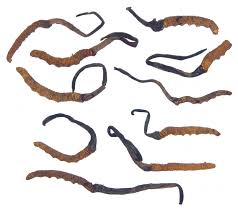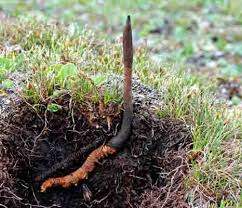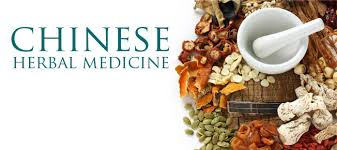Cordyceps Herbal
by Prof.Dr.Henry,Ph.D.®
Jl. Kupang Jaya 8/9
Surabaya Barat
(031) 731 0148
0818 39 0809
Terapi+Konsultasi+Seminar2nya
GRATIS hanya dengan JANJI !
Atau SMS kan NAMA+Nomor
Telpon Kantor / Rumah +
Kode Areanya. Segera
dihubungi ! ! !


Awet MUDA dan Selalu PRIMA dalam KeSEHATan !!



This is a picture of wild cordyceps (Cordyceps Sinensis), the yellow,
furry part is the worm, and the black, sharp part is the mushroom itself.

This is a picture of biotechnology cultured cordyceps
(Cordyceps Militaris), where the worm isn't existent.
HEBATnya Cordyceps HERBAL ini = 30 Kali
Khasiat CORDYCEPS SINENSIS ! ! !
Sehingga Apapun PENYAKITnya
SOLUSI TERBAIKNYA
Hanya Di sini !!
![]()
Jl. Kupang Jaya 8/9
Surabaya Barat
(031) 731 0148
0818 39 0809
Terapi+Konsultasi+Seminar2nya
GRATIS hanya dengan JANJI !
Atau SMS kan NAMA+Nomor
Telpon Kantor / Rumah +
Kode Areanya. Segera
dihubungi ! ! !
GRATIS SEMINAR
Senin, 8-6-2015
Di Hotel QUEST
Jl. Ronggolawe 27-29
S U R A B A Y A
Pukul: 18.00
SMS kan NAMA ke:
0878 5126 5568
Prof.Dr.Henry,Ph.D.®
Di Hotel QUEST
Jl. Ronggolawe 27-29
S U R A B A Y A
Pukul: 18.00
SMS kan NAMA ke:
0878 5126 5568
Prof.Dr.Henry,Ph.D.®
Awet MUDA dan Selalu PRIMA dalam KeSEHATan !!

This is a picture of wild cordyceps (Cordyceps Sinensis), the yellow,
furry part is the worm, and the black, sharp part is the mushroom itself.
This is a picture of biotechnology cultured cordyceps
(Cordyceps Militaris), where the worm isn't existent.
HEBATnya Cordyceps HERBAL ini = 30 Kali
Khasiat CORDYCEPS SINENSIS ! ! !
Sehingga Apapun PENYAKITnya
SOLUSI TERBAIKNYA
Hanya Di sini !!
Cordyceps From Wikipedia, the free encyclopedia
Cordyceps /ˈkɔrdəsɛps/ is a genus of ascomycete fungi (sac fungi) that includes about 400 species. All Cordyceps species areendoparasitoids, parasitic mainly on insects and other arthropods (they are thus entomopathogenic fungi); a few are parasitic on other fungi. Until recently, the best known species of the genus was Cordyceps sinensis,[1] first recorded as yartsa gunbu in Nyamnyi Dorje's 15th century Tibetan text An ocean of Aphrodisiacal Qualities. [2] and known as yarsha gumba in Nepali and ""summer-grass, winter-worm" in English. In 2007, nuclear DNA sampling revealed this species to be unrelated to most of the rest of the genus' members; as a result it was renamed Ophiocordyceps sinensis and placed in a new family, the Ophiocordycipitaceae.
The generic name Cordyceps is derived from the Greek word kordyle, meaning "club", and the Latin stem -ceps, meaning "head". Several species of Cordyceps are considered to be medicinal mushrooms in classical Asian pharmacologies, such as that of traditional Chinese[3][4] and Tibetan medicines.

Polysaccharides from Cordyceps Sinensis proved to have a protective effect against chronic renal failure caused by fulgerizing kidneys.**—Fitoterapia, 20101
An increase in testosterone production after taking Cordyceps Sinensis was shown in lab results with mice. Additionally, the blood plasma cortisol, testicle alkone and fresh semen were all strengthened, as well as the endocrine and reproduction function.**—Life Sciences, 20012
The in vivo and in vitro effects of Cordyceps Sinensis indicated that CS might contribute to an alternative medicine for the treatment of some reproductive problems caused by insufficient testosterone levels in human males.**—Biotech Week, 20033
1990 study showed Cordyceps Sinensis helped against autoimmune disorders by calming and quieting the cells of the immune system. Additionally, the study reported significant sugar lowering effects from the cordyceps test group, with improvement in 95% of the test subjects.**—Medicinal Mushrooms, 20024
A 1999 UCLA study affirmed Cordyceps Sinensis’s benefits on exercise performance. The study tested the oxygen intake of 30 elderly patients. Subjects given cordyceps sinensis increased their oxygen intake from 1.88 to 2.00 liters per minute vs no increase in the placebo group.**—Medicinal Mushrooms, 20024
92 out of 100 patients (92%) with various respiratory diseases, such as chronic bronchitis, bronchial asthma, or cor pulmonale, reported a significant clinical improvement after using a Cordyceps Sinensis supplement for 2-12 weeks.**—The Journal of Alternative and Complementary Medicine, 19985
**Research reports are listed for educational use and consumer awareness. Although, we support the research, the studies were conducted by outside parties who are not affiliated with Tonicology. Tonicology is not responsible for any content or claims made by these studies. Resources are cited.
 Cordyceps drew heightened global attention when two female athletes from China broke the world records for the 1,500 meter, the 3,000 meter, and the 10,000 meter run, which was surpassed by 42 seconds, in the 1993 National Games in Stuttgart, Germany. In total, 9 world records for 3 women’s track and field events were shattered in a week! In a press interview, the Chinese coach claimed that taking Cordyceps as a daily supplement had greatly enhanced the athletes' performance, stamina, and endurance. This event sparked the attention and research for Cordyceps as a popular supplement outside of the Eastern hemisphere.
Cordyceps drew heightened global attention when two female athletes from China broke the world records for the 1,500 meter, the 3,000 meter, and the 10,000 meter run, which was surpassed by 42 seconds, in the 1993 National Games in Stuttgart, Germany. In total, 9 world records for 3 women’s track and field events were shattered in a week! In a press interview, the Chinese coach claimed that taking Cordyceps as a daily supplement had greatly enhanced the athletes' performance, stamina, and endurance. This event sparked the attention and research for Cordyceps as a popular supplement outside of the Eastern hemisphere.
Independent Clinical Studies
Polysaccharides from Cordyceps Sinensis proved to have a protective effect against chronic renal failure caused by fulgerizing kidneys.**—Fitoterapia, 20101
An increase in testosterone production after taking Cordyceps Sinensis was shown in lab results with mice. Additionally, the blood plasma cortisol, testicle alkone and fresh semen were all strengthened, as well as the endocrine and reproduction function.**—Life Sciences, 20012
The in vivo and in vitro effects of Cordyceps Sinensis indicated that CS might contribute to an alternative medicine for the treatment of some reproductive problems caused by insufficient testosterone levels in human males.**—Biotech Week, 20033
1990 study showed Cordyceps Sinensis helped against autoimmune disorders by calming and quieting the cells of the immune system. Additionally, the study reported significant sugar lowering effects from the cordyceps test group, with improvement in 95% of the test subjects.**—Medicinal Mushrooms, 20024
A 1999 UCLA study affirmed Cordyceps Sinensis’s benefits on exercise performance. The study tested the oxygen intake of 30 elderly patients. Subjects given cordyceps sinensis increased their oxygen intake from 1.88 to 2.00 liters per minute vs no increase in the placebo group.**—Medicinal Mushrooms, 20024
92 out of 100 patients (92%) with various respiratory diseases, such as chronic bronchitis, bronchial asthma, or cor pulmonale, reported a significant clinical improvement after using a Cordyceps Sinensis supplement for 2-12 weeks.**—The Journal of Alternative and Complementary Medicine, 19985
**Research reports are listed for educational use and consumer awareness. Although, we support the research, the studies were conducted by outside parties who are not affiliated with Tonicology. Tonicology is not responsible for any content or claims made by these studies. Resources are cited.
History Of Wild Cordyceps Sinensis*
Over the millennia, Cordyceps sinensis has been treasured throughout Asia as one of the most effective natural tonics to strengthen vitality and promote longevity. A precious herbal adaptogen, Cordyceps sinensis contains many active ingredients, including ribonucleosides, mannitol, sterols, organic acids, polysaccharides, proteins, polyamines, amino acids, dismutase, dipeptides, vitamins, and a variety of trace elements.  The attributes of Cordyceps have been well-documented by Traditional Chinese Medicine and are the subjects of modern biomedical and clinical studies around the world. Because of its medicinal properties and its scarcity in nature, Cordyceps was deemed so precious that it was reserved only for emperors in ancient China. More recently, the use of Cordyceps has been memorialized by its association with athletic training and impressive outcomes at international sports competitions. It attracted worldwide attention in 1993 when the Chinese women’s track and field team broke 9 world records during the international competition and has since gained popularity among athletes, including international basketball star Yao Ming.
The attributes of Cordyceps have been well-documented by Traditional Chinese Medicine and are the subjects of modern biomedical and clinical studies around the world. Because of its medicinal properties and its scarcity in nature, Cordyceps was deemed so precious that it was reserved only for emperors in ancient China. More recently, the use of Cordyceps has been memorialized by its association with athletic training and impressive outcomes at international sports competitions. It attracted worldwide attention in 1993 when the Chinese women’s track and field team broke 9 world records during the international competition and has since gained popularity among athletes, including international basketball star Yao Ming.
Thus, only within the last few decades have scientists truly launched in-depth studies on the health benefits of this mushroom. Recent studies have uncovered possible antibiotic, antitumor, antioxidant, anti-asthmatic, and anti-fatigue properties within the mushroom. Today’s scientists are only now uncovering the potential effects of the mushroom against tuberculosis and other respiratory ailments by protecting the lungs and dissolving phlegm, cardiovascular problems by stimulating blood circulation, muscle and back pain by relaxing smooth muscles, kidney and liver problems by protecting these vital organs, and autoimmune diseases by boosting the immune system and fighting infections. Cordyceps has become a hot topic in today’s scientific arena with ongoing clinical trials on the mushroom’s medicinal properties and health benefits.



Herbal - Wikipedia bahasa Indonesia, ensiklopedia bebas
References & Resources**
1 “Protection of chronic renal failure by a polysaccharide from Cordyceps sinensis”, Wang, Ying; Yin, Hongping; Lv, Xiaobo; Wang, Yufeng; Gao, Hongyan; Wang, Min., Fitoterapia,Jul 2010, Vol. 81 Issue 5, p397-402**
2 “Effects of Cordyceps sinensis on testosterone production in normal mouse Leydig cells”, Huang, B-M, Life Sciences, 2001, 69:2593 - 2602**
3 “Cordyceps Sinensis Stimulates Testosterone Production”, , Biotech Week, 2003, 302**
4 “”, , Medicinal Mushrooms, 2002, **
4 “Medicinal Mushrooms”, Halpern, George and Miller, Andrew., Medicinal Mushrooms,2002, **
5 “Cordyceps Sinensis”, Zhu, Jia-Shi, Georges M. Halpern, and Kenneth Jones, The Journal of Alternative and Complementary Medicine, 1998, 4 (4): 429-457**
| Cordyceps | |
|---|---|
 | |
| Cordyceps Militaris | |
| Scientific Classification | |
| Kingdom: | Fungi |
| Division: | Ascomycota |
| Class: | Sordariomycetes |
| Order: | Hypocreales |
| Family: | Cordycipitaceae |
| Genus: | Cordyceps Fr. (1818) |
| Type Species | |
| Cordyceps Militaris (L.) Fr. (1818) | |
| Species | |
About 400
| |
Herbal - Wikipedia bahasa Indonesia, ensiklopedia bebas
Id.Wikipedia.Org/Wiki/Herbal
Herbal adalah tanaman atau tumbuhan yang mempunyai kegunaan atau nilai lebih dalam pengobatan.
Dengan kata lain, semua jenis tanaman yang ...
Herbal adalah tanaman atau tumbuhan yang mempunyai kegunaan atau nilai lebih dalam pengobatan.
Dengan kata lain, semua jenis tanaman yang ...